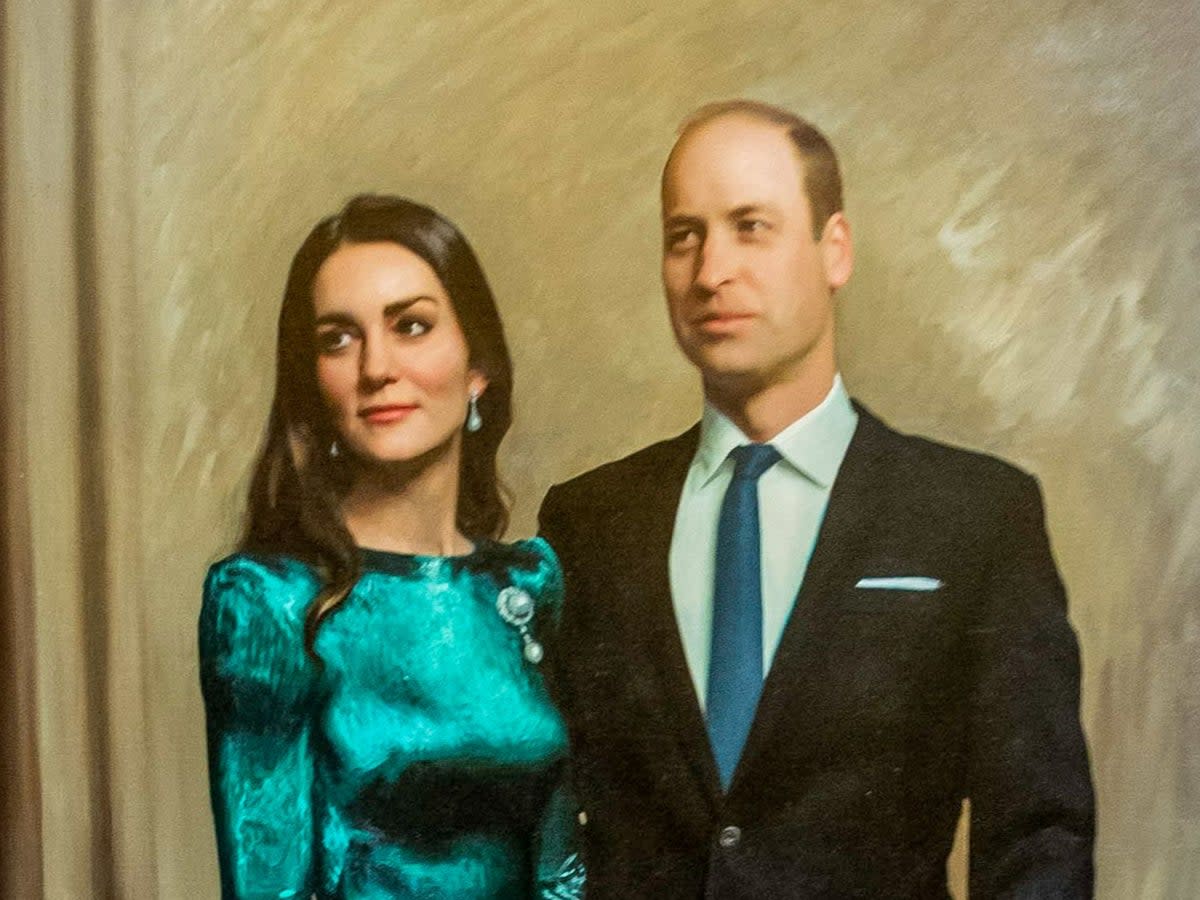Prince William and Kate’s new royal portrait might be the cheekiest ever

Royal portraits are usually a disaster. How could they not be? The two main things the world does with the royals is look at them, and then talk about them. The unveiling of any new royal portrait is basically this on steroids. A painting is unveiled and we all pick over it, declaring whether the artist got it “right” – whether it bears any accurate resemblance, or whether it stands for anything at all. Artist Jamie Coreth must be feeling quite relieved this week, then: his portrait of the Duke and Duchess of Cambridge, the first of the couple together, has bucked the trend. It looks like them – tick. But it also seems to say something intriguing about who they are, and what they will become.
What’s most immediately striking is that Will and Kate are depicted as relaxed, modern royals. Unveiled at the Fitzwilliam Museum in Cambridge yesterday (23 June), the painting shows the pair with their arms around one another, looking off to the side. He has his hand in his pocket; she wears a dress from Susie Cave’s label, The Vampire’s Wife. Everyone wants that dress now (although it costs £1,595, so not very cost-of-living). The likeness is good, even if it’s slightly soft and hazy, like the whole thing has had an Instagram filter applied to it. The future king and queen look camera-ready, but also like they’re standing at a party, waiting for the champers tray to come round. It’s still very regal – Coreth said he wanted to show them as “relaxed and approachable, as well as elegant and dignified” – but it seems to have a sense of humour about it, a certain cheekiness. Does it work? I think so.
It’s not always like this. Sunday Times art critic Waldemar Januszczak recently wrote that portraits of the Queen have, throughout her reign, been “relentlessly disappointing”. Lucian Freud made Her Majesty look like she was made of papier mâché. The recent Diana sculpture was hagiographical while removing all of her dynamism. One of the best portraits of her, by Nelson Shanks, is also the saddest; she looks weighed down by life. Not a great advert for the Firm. Nicky Philipps’s portrait of Harry and Wills having a private, jokey chat is fun, but, she says, she was “savaged” for giving the royal heir too much hair. And who could forget the original Kate portrait by Paul Emsley, where she looked like she’d been up all night? The verdict was ruthless. The Guardian compared it to “something terrible from the Twilight franchise”, while the British Art Journal called it “an out and out disaster”. Kate said she liked it, but as an art history grad and skilled photographer, you had to wonder what she really thought.
Naturally, there has been criticism of this new portrait. In The Telegraph, Alastair Sooke dismisses it as too safe. AN Wilson calls it “dead as a dodo”. Kate has been reduced “to the status of a dummy; a beautiful woman to a strangely boring doll”. His comments are reminiscent of Hilary Mantel’s controversial description of Kate in 2013, as “a shop-window mannequin” with “a perfect plastic smile”, someone who “appears precision-made, machine-made”.
There are two people in the picture, but attention has gravitated towards the Duchess. It always does. She is relentlessly looked at. But here I see a woman who has become accustomed to that. In Ways of Seeing, John Berger famously wrote, “Men act and women appear. Men look at women. Women watch themselves being looked at.” She seems like someone who knows that. A common criticism of Kate is that she is contained – but contained doesn’t necessarily mean vacant. It’s a strategy, surely, rather than a personality defect. What else to do when confronted with the world’s gaze, but seal yourself off?
A woman, saying little, allowing the world to look at her. It’s another clue that maybe the royal couple aren’t, after all, as “modern” as they might like us to believe. History can’t help but drag them back. Having your portrait painted is an antiquated thing to do, after all – an upper-class tradition, designed to enforce status, declare greatness. And yet the monarchy is undoubtedly in a period of transition. The future is coming, and this looks a bit like it. William wears a wry grin. Kate’s right eyebrow is slightly arched. In this portrait, they look ready for their public, poised and prepared. A couple who want to take their duties seriously, but keep something back for themselves. It looks a bit like change – but not too much. Perhaps that’s the cheekiest thing of all.


